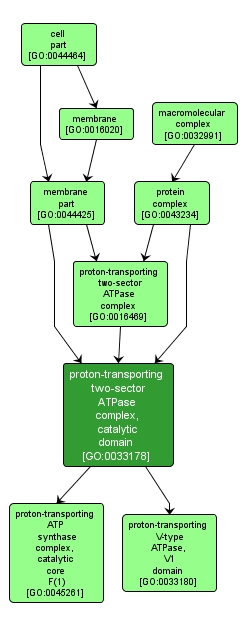GO TERM SUMMARY
|
| Name: |
proton-transporting two-sector ATPase complex, catalytic domain |
| Acc: |
GO:0033178 |
| Aspect: |
Cellular Component |
| Desc: |
A protein complex that forms part of a proton-transporting two-sector ATPase complex and catalyzes ATP hydrolysis or synthesis. The catalytic domain (F1, V1, or A1) comprises a hexameric catalytic core and a central stalk, and is peripherally associated with the membrane when the two-sector ATPase is assembled. |
|

|
INTERACTIVE GO GRAPH
|














